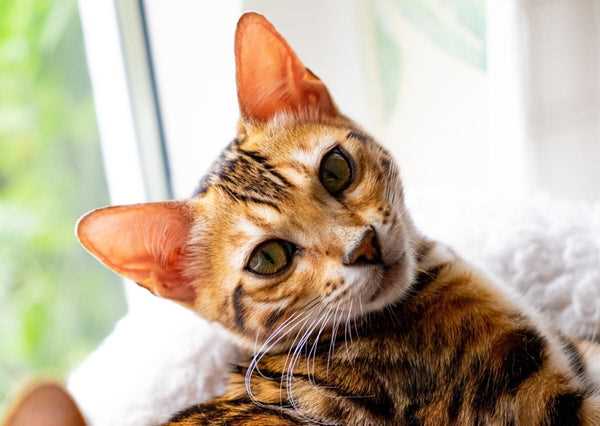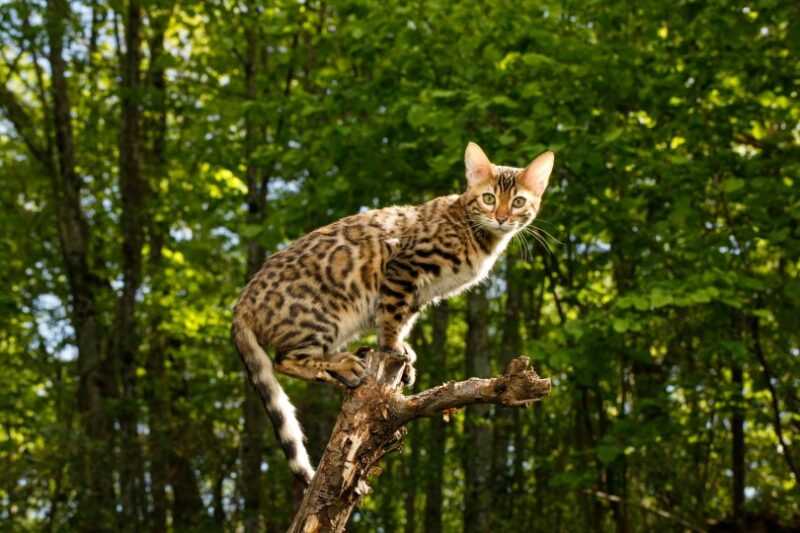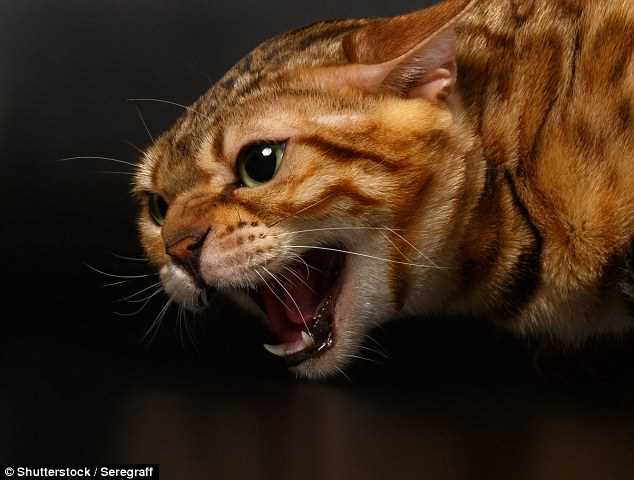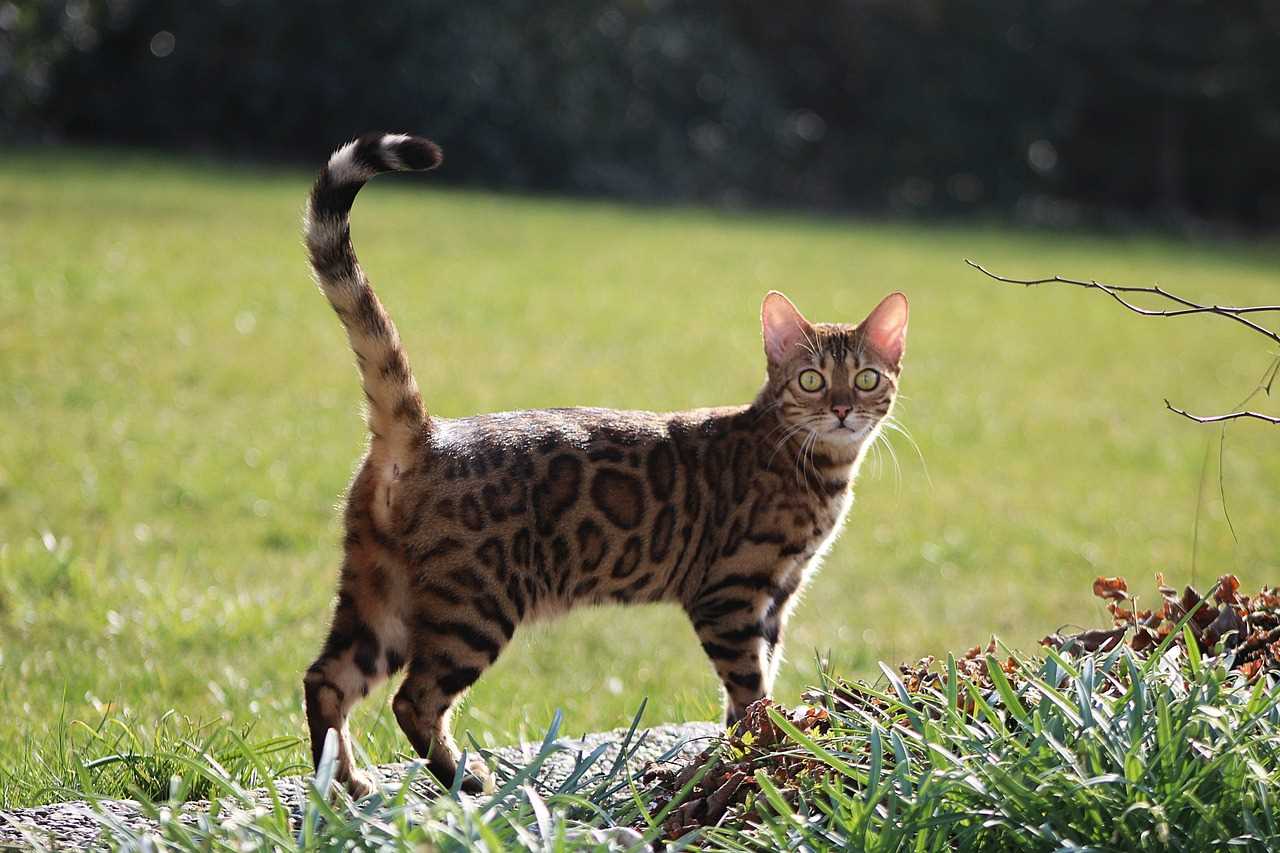Directly addressing the concern, the temperament of these strikingly patterned animals can vary significantly. It’s critical to recognize that individual personalities play a pivotal role in how they interact with humans and other pets. Many owners report that these creatures can be quite affectionate and playful, often seeking companionship rather than displaying hostility.
One important aspect to consider is socialization. Well-socialized specimens tend to exhibit friendlier behaviors, while those that haven’t been exposed to various stimuli may act defensively. Regular interaction and positive reinforcement during their formative months can lead to a more relaxed and approachable demeanor.
Moreover, providing engaging toys and interactive playtime can channel their energy positively. Activities that stimulate their natural hunting instincts can prevent any potential for aggressive behavior. It’s also wise to observe their body language closely; signs of stress or discomfort can often be mitigated with a calm environment and gentle handling.
Understanding Behavior of This Unique Breed

In my experience, these felines can exhibit a range of behaviors, but aggression is often not one of their defining traits. Instead, they tend to be playful and curious. They thrive on interaction and mental stimulation, which keeps their energy in check.
To mitigate any potential for unwanted behaviors, it’s crucial to provide ample playtime and engagement. Toys that mimic hunting, like feather wands or laser pointers, can channel their energy appropriately. Regular socialization from an early age is also beneficial. This helps them become well-adjusted and friendly companions.
When feeling threatened or overstimulated, they might display defensive behaviors. Recognizing their body language is key. Ears flattened back and a twitching tail can indicate discomfort. Providing a safe space where they can retreat is essential for their well-being.
Establishing boundaries is important, too. Encouraging gentle play and discouraging rough interactions can shape their behavior positively. Consistency in training reinforces desirable habits and reduces any signs of aggression.
This breed thrives in environments where they feel secure and loved. A nurturing atmosphere leads to a more harmonious relationship, reducing the likelihood of aggressive tendencies. Building trust through positive reinforcement is the best approach.
Understanding Bengal Cat Behavior in Domestic Settings

To ensure a harmonious living environment, it’s crucial to provide ample stimulation and engagement. Interactive toys and puzzle feeders can help channel their energy positively. Regular playtime is essential; set aside dedicated moments each day for active engagement. This practice not only strengthens your bond but also helps manage their natural instincts.
Socialization plays a significant role in shaping their demeanor. Introducing them to various environments, people, and even other pets from a young age can promote confidence and reduce potential stressors. If you already have other animals, gradual introductions will be beneficial. Monitor their interactions closely and intervene if necessary.
Understanding their vocalizations can also enhance communication. They often express their needs and emotions through distinct sounds. Pay attention to these cues; they can indicate when they seek attention, food, or playtime. Responding appropriately fosters trust and an understanding relationship.
Providing vertical spaces is another important aspect. These felines enjoy climbing and exploring high vantage points. Cat trees or shelves can satisfy their natural climbing instinct while keeping them entertained. Make sure these structures are stable and secure to prevent accidents.
Lastly, consider their dietary needs. A balanced diet tailored to their specific energy levels and age is vital for health and well-being. Regular vet check-ups will help monitor their condition and ensure they remain in peak shape.
Factors Influencing Aggression in Bengal Cats

To minimize unwanted behaviors, understanding specific influences is key. The environment, socialization, and health play crucial roles in shaping temperament.
- Environment: A stimulating yet safe space can reduce stress. Provide climbing structures, scratching posts, and toys to engage their natural instincts.
- Socialization: Early interactions with people and other pets help in developing a balanced personality. Regular, positive experiences can lessen fear-based reactions.
- Health: Illness or discomfort can lead to irritability. Regular veterinary check-ups are vital. If your furry friend is frequently unwell, check out why wont my cat stop throwing up for insights.
Diet also impacts behavior. Ensure a balanced nutrition plan. If you’re curious about dietary options, consider what kind of fish can cats eat to enhance their meals.
Ultimately, creating a nurturing atmosphere with proper care can significantly influence temperament and minimize aggressive tendencies.
Training Techniques to Manage Bengal Cat Aggression

Positive reinforcement is key. Rewarding desired behaviors with treats or praise encourages my friend to repeat them. For instance, when they play gently, I make sure to offer a tasty snack right away.
Consistent routines help establish boundaries. Setting specific times for meals, play, and rest creates a structured environment that reduces stress. Predictability is comforting and can minimize potential outbursts.
Redirecting attention works wonders. Instead of reacting to undesired behaviors, I guide my companion toward more appropriate activities, like using a scratching post or engaging with interactive toys. This diverts their energy without escalating tension.
Socialization is crucial. Exposing them to various environments, people, and other pets from a young age builds confidence and reduces fear-based reactions. Regular playdates with calm animals can foster better social skills.
Using calming products like pheromone diffusers can create a soothing atmosphere. These products mimic natural scents that promote relaxation, making it easier for my friend to feel secure and less prone to outbursts.
Finally, patience is essential. Training takes time, and understanding that every individual is unique allows for a tailored approach. Celebrating small victories keeps the process enjoyable for both of us.
Directly addressing the concern, the temperament of these strikingly patterned animals can vary significantly. It’s critical to recognize that individual personalities play a pivotal role in how they interact with humans and other pets. Many owners report that these creatures can be quite affectionate and playful, often seeking companionship rather than displaying hostility.
One important aspect to consider is socialization. Well-socialized specimens tend to exhibit friendlier behaviors, while those that haven’t been exposed to various stimuli may act defensively. Regular interaction and positive reinforcement during their formative months can lead to a more relaxed and approachable demeanor.
Moreover, providing engaging toys and interactive playtime can channel their energy positively. Activities that stimulate their natural hunting instincts can prevent any potential for aggressive behavior. It’s also wise to observe their body language closely; signs of stress or discomfort can often be mitigated with a calm environment and gentle handling.
Understanding Behavior of This Unique Breed

In my experience, these felines can exhibit a range of behaviors, but aggression is often not one of their defining traits. Instead, they tend to be playful and curious. They thrive on interaction and mental stimulation, which keeps their energy in check.
To mitigate any potential for unwanted behaviors, it’s crucial to provide ample playtime and engagement. Toys that mimic hunting, like feather wands or laser pointers, can channel their energy appropriately. Regular socialization from an early age is also beneficial. This helps them become well-adjusted and friendly companions.
When feeling threatened or overstimulated, they might display defensive behaviors. Recognizing their body language is key. Ears flattened back and a twitching tail can indicate discomfort. Providing a safe space where they can retreat is essential for their well-being.
Establishing boundaries is important, too. Encouraging gentle play and discouraging rough interactions can shape their behavior positively. Consistency in training reinforces desirable habits and reduces any signs of aggression.
This breed thrives in environments where they feel secure and loved. A nurturing atmosphere leads to a more harmonious relationship, reducing the likelihood of aggressive tendencies. Building trust through positive reinforcement is the best approach.
Understanding Bengal Cat Behavior in Domestic Settings

To ensure a harmonious living environment, it’s crucial to provide ample stimulation and engagement. Interactive toys and puzzle feeders can help channel their energy positively. Regular playtime is essential; set aside dedicated moments each day for active engagement. This practice not only strengthens your bond but also helps manage their natural instincts.
Socialization plays a significant role in shaping their demeanor. Introducing them to various environments, people, and even other pets from a young age can promote confidence and reduce potential stressors. If you already have other animals, gradual introductions will be beneficial. Monitor their interactions closely and intervene if necessary.
Understanding their vocalizations can also enhance communication. They often express their needs and emotions through distinct sounds. Pay attention to these cues; they can indicate when they seek attention, food, or playtime. Responding appropriately fosters trust and an understanding relationship.
Providing vertical spaces is another important aspect. These felines enjoy climbing and exploring high vantage points. Cat trees or shelves can satisfy their natural climbing instinct while keeping them entertained. Make sure these structures are stable and secure to prevent accidents.
Lastly, consider their dietary needs. A balanced diet tailored to their specific energy levels and age is vital for health and well-being. Regular vet check-ups will help monitor their condition and ensure they remain in peak shape.
Factors Influencing Aggression in Bengal Cats

To minimize unwanted behaviors, understanding specific influences is key. The environment, socialization, and health play crucial roles in shaping temperament.
- Environment: A stimulating yet safe space can reduce stress. Provide climbing structures, scratching posts, and toys to engage their natural instincts.
- Socialization: Early interactions with people and other pets help in developing a balanced personality. Regular, positive experiences can lessen fear-based reactions.
- Health: Illness or discomfort can lead to irritability. Regular veterinary check-ups are vital. If your furry friend is frequently unwell, check out why wont my cat stop throwing up for insights.
Diet also impacts behavior. Ensure a balanced nutrition plan. If you’re curious about dietary options, consider what kind of fish can cats eat to enhance their meals.
Ultimately, creating a nurturing atmosphere with proper care can significantly influence temperament and minimize aggressive tendencies.
Training Techniques to Manage Bengal Cat Aggression

Positive reinforcement is key. Rewarding desired behaviors with treats or praise encourages my friend to repeat them. For instance, when they play gently, I make sure to offer a tasty snack right away.
Consistent routines help establish boundaries. Setting specific times for meals, play, and rest creates a structured environment that reduces stress. Predictability is comforting and can minimize potential outbursts.
Redirecting attention works wonders. Instead of reacting to undesired behaviors, I guide my companion toward more appropriate activities, like using a scratching post or engaging with interactive toys. This diverts their energy without escalating tension.
Socialization is crucial. Exposing them to various environments, people, and other pets from a young age builds confidence and reduces fear-based reactions. Regular playdates with calm animals can foster better social skills.
Using calming products like pheromone diffusers can create a soothing atmosphere. These products mimic natural scents that promote relaxation, making it easier for my friend to feel secure and less prone to outbursts.
Finally, patience is essential. Training takes time, and understanding that every individual is unique allows for a tailored approach. Celebrating small victories keeps the process enjoyable for both of us.
Directly addressing the concern, the temperament of these strikingly patterned animals can vary significantly. It’s critical to recognize that individual personalities play a pivotal role in how they interact with humans and other pets. Many owners report that these creatures can be quite affectionate and playful, often seeking companionship rather than displaying hostility.
One important aspect to consider is socialization. Well-socialized specimens tend to exhibit friendlier behaviors, while those that haven’t been exposed to various stimuli may act defensively. Regular interaction and positive reinforcement during their formative months can lead to a more relaxed and approachable demeanor.
Moreover, providing engaging toys and interactive playtime can channel their energy positively. Activities that stimulate their natural hunting instincts can prevent any potential for aggressive behavior. It’s also wise to observe their body language closely; signs of stress or discomfort can often be mitigated with a calm environment and gentle handling.
Understanding Behavior of This Unique Breed

In my experience, these felines can exhibit a range of behaviors, but aggression is often not one of their defining traits. Instead, they tend to be playful and curious. They thrive on interaction and mental stimulation, which keeps their energy in check.
To mitigate any potential for unwanted behaviors, it’s crucial to provide ample playtime and engagement. Toys that mimic hunting, like feather wands or laser pointers, can channel their energy appropriately. Regular socialization from an early age is also beneficial. This helps them become well-adjusted and friendly companions.
When feeling threatened or overstimulated, they might display defensive behaviors. Recognizing their body language is key. Ears flattened back and a twitching tail can indicate discomfort. Providing a safe space where they can retreat is essential for their well-being.
Establishing boundaries is important, too. Encouraging gentle play and discouraging rough interactions can shape their behavior positively. Consistency in training reinforces desirable habits and reduces any signs of aggression.
This breed thrives in environments where they feel secure and loved. A nurturing atmosphere leads to a more harmonious relationship, reducing the likelihood of aggressive tendencies. Building trust through positive reinforcement is the best approach.
Understanding Bengal Cat Behavior in Domestic Settings

To ensure a harmonious living environment, it’s crucial to provide ample stimulation and engagement. Interactive toys and puzzle feeders can help channel their energy positively. Regular playtime is essential; set aside dedicated moments each day for active engagement. This practice not only strengthens your bond but also helps manage their natural instincts.
Socialization plays a significant role in shaping their demeanor. Introducing them to various environments, people, and even other pets from a young age can promote confidence and reduce potential stressors. If you already have other animals, gradual introductions will be beneficial. Monitor their interactions closely and intervene if necessary.
Understanding their vocalizations can also enhance communication. They often express their needs and emotions through distinct sounds. Pay attention to these cues; they can indicate when they seek attention, food, or playtime. Responding appropriately fosters trust and an understanding relationship.
Providing vertical spaces is another important aspect. These felines enjoy climbing and exploring high vantage points. Cat trees or shelves can satisfy their natural climbing instinct while keeping them entertained. Make sure these structures are stable and secure to prevent accidents.
Lastly, consider their dietary needs. A balanced diet tailored to their specific energy levels and age is vital for health and well-being. Regular vet check-ups will help monitor their condition and ensure they remain in peak shape.
Factors Influencing Aggression in Bengal Cats

To minimize unwanted behaviors, understanding specific influences is key. The environment, socialization, and health play crucial roles in shaping temperament.
- Environment: A stimulating yet safe space can reduce stress. Provide climbing structures, scratching posts, and toys to engage their natural instincts.
- Socialization: Early interactions with people and other pets help in developing a balanced personality. Regular, positive experiences can lessen fear-based reactions.
- Health: Illness or discomfort can lead to irritability. Regular veterinary check-ups are vital. If your furry friend is frequently unwell, check out why wont my cat stop throwing up for insights.
Diet also impacts behavior. Ensure a balanced nutrition plan. If you’re curious about dietary options, consider what kind of fish can cats eat to enhance their meals.
Ultimately, creating a nurturing atmosphere with proper care can significantly influence temperament and minimize aggressive tendencies.
Training Techniques to Manage Bengal Cat Aggression

Positive reinforcement is key. Rewarding desired behaviors with treats or praise encourages my friend to repeat them. For instance, when they play gently, I make sure to offer a tasty snack right away.
Consistent routines help establish boundaries. Setting specific times for meals, play, and rest creates a structured environment that reduces stress. Predictability is comforting and can minimize potential outbursts.
Redirecting attention works wonders. Instead of reacting to undesired behaviors, I guide my companion toward more appropriate activities, like using a scratching post or engaging with interactive toys. This diverts their energy without escalating tension.
Socialization is crucial. Exposing them to various environments, people, and other pets from a young age builds confidence and reduces fear-based reactions. Regular playdates with calm animals can foster better social skills.
Using calming products like pheromone diffusers can create a soothing atmosphere. These products mimic natural scents that promote relaxation, making it easier for my friend to feel secure and less prone to outbursts.
Finally, patience is essential. Training takes time, and understanding that every individual is unique allows for a tailored approach. Celebrating small victories keeps the process enjoyable for both of us.







